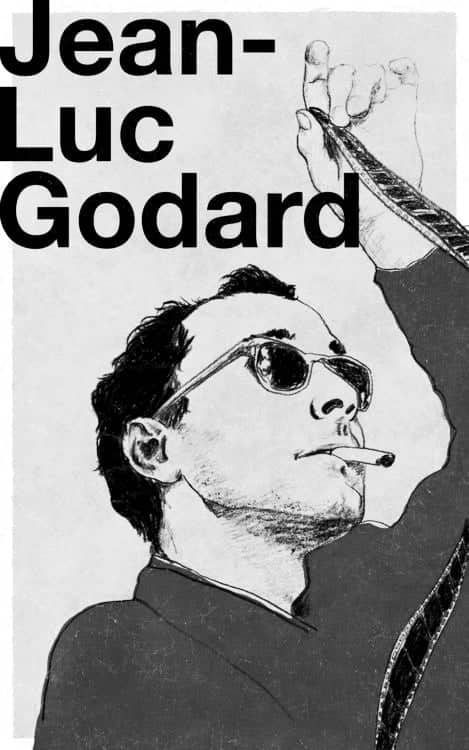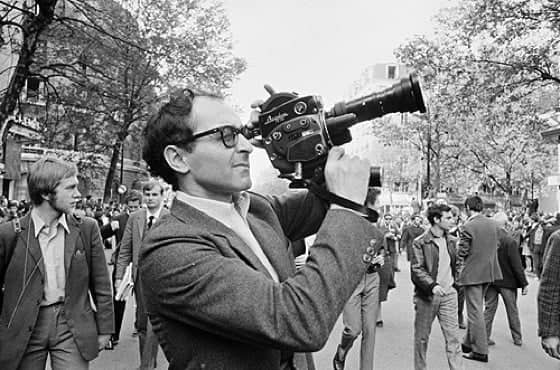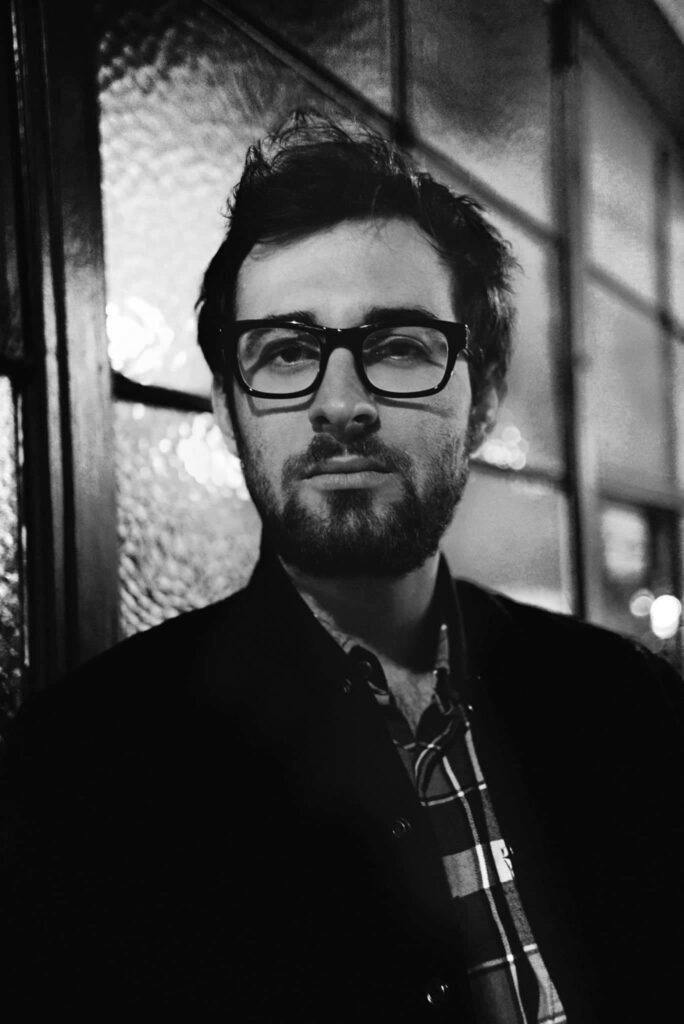
Frankenstein’s monster was an experiment constructed by infusing dissected body parts
together and brought to life by an unspecified process. Ever a champion of auteur theory, it is as
fitting as one of the creature’s fused limbs, that near the end of Jean-Luc Godard’s 2014
Goodbye to Language there is a sequence of Mary Shelley finishing her famed novel.
I was lucky enough to see Goodbye to Language as a theatrical release when it came out in 2014.

Not that Godard’s films do not get screened at revival theaters often. In fact, I had just
watched a double bill of 1960’s Breathless and 1964’s Bande à part at Quentin Tarantino’s New
Beverly theater at the end of August. But what made seeing Goodbye to Language particularly
special, was the opportunity to see a new Godard film in theater. It is not overstating his
legendary status, having influenced a number of the best contemporary filmmakers today, from
Martin Scorsese, George Lucas, Steven Soderbergh, and the aforementioned Tarantino (whose
production company ‘A Band Apart’ is a riff on the title Bande à part). Although this week day
screening wasn’t pacted, didn’t warrant a stand by line, nor was it built up as a momentous
occasion, it felt like being part of history. It’s like getting to see The Rolling Stones in 2022. Sure,
it’s not the American Tour 1972, but you will forever get to say you were witness to something
culturally significant, important.
In the spirit of Godard’s filmmaking career starting with Breathless, which popularized jump cuts
for how unabashedly bold he was with his unconventional usage of them, his second to last
feature film, Goodbye to Language radicalized the usage of 3D technology. Although Breathless
is occasionally incorrectly associated with inventing the jump cut, Godard and his
cinematographer Fabrice Aragno, quite literally created a new shot in filmmaking. The shots are
two events happening simultaneously, overlapping with one another, and then eventually
syncing up. There was no word for it. Aragno referred to it as “separation”. I saw Avatar and
Gravity on IMAX in 3D and to this day I have never seen anything like what Godard did at 84
years old.
When I saw this movie, in theaters, in 2014, in San Francisco, I was 23.

I was in film school. I was young, I am American, I love stories and plot. I probably walked out with a snide comment about what the hell I just watched, (although I do remember acknowledging the ‘separation’
shots at the time as revolutionary, which they were). Jean-Luc Godard passed away yesterday. I did not go back to celebrate his seismic impact on the history of this medium by revisiting A
Woman is a Woman, Vivre Sa Vie, Pierrot le Fou, or any of the classic films he made during La
Nouvelle Vague. I went back to Goodbye to Language, the Godard movie of my 20’s. And
although the actors in the film didn’t end up being the next Jean-Paul Belmondo nor Anna
Karina, they will forever be in a Godard film.
This is a film made by someone who has nothing to prove, but who has to create. Who is
excited, not afraid of technology. Who even in the face of new technology has to challenge
himself and his audiences. I couldn’t help but think of making films as a teenager and turning up
the high contrast or negative film effects on iMovie. It’s the thing either an amatuer would do, or
a master completely giving into the freedom of experimentation would have the nerve to.
And it’s something only Godard could have made. An auteur till the end, in the 69 minute run
time it is pieced together, like Frankenstein’s monster, all of what you want from a Godard film:
Dialogue that reads more as existential philosophy, perfectly subtitled that you could make a
screenshot of any line and it would get thousands of likes on any artsy influencer Instagram
account. Abrupt noises with harsh cuts to silence. Commentary on society, war, politics. A loose
plot involving an affair. And of course, a girl and a gun.
